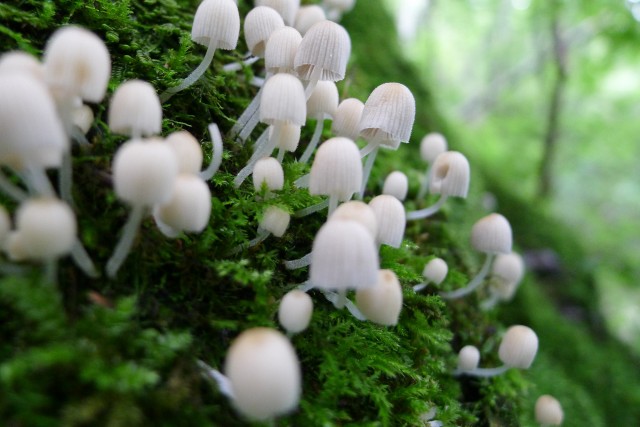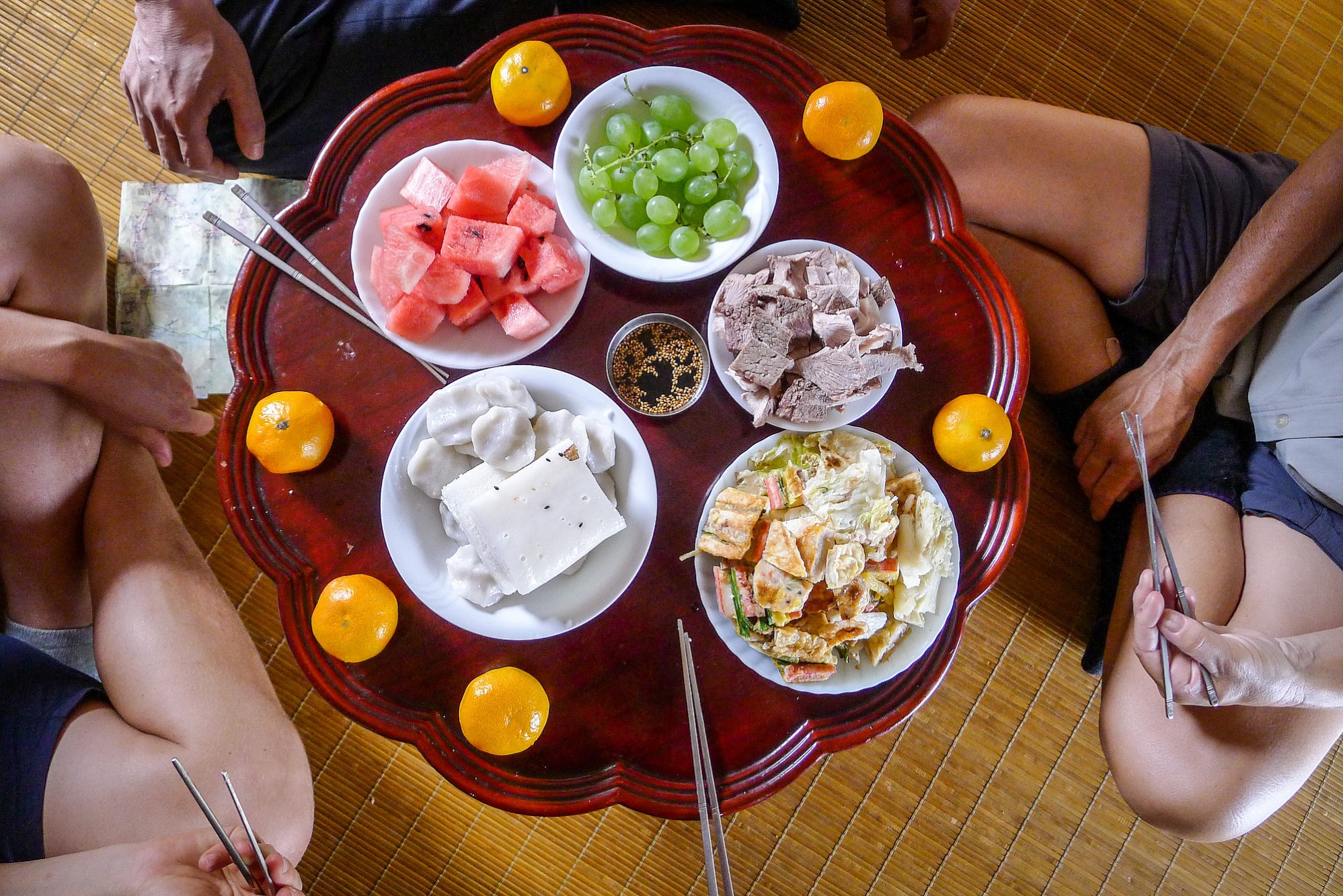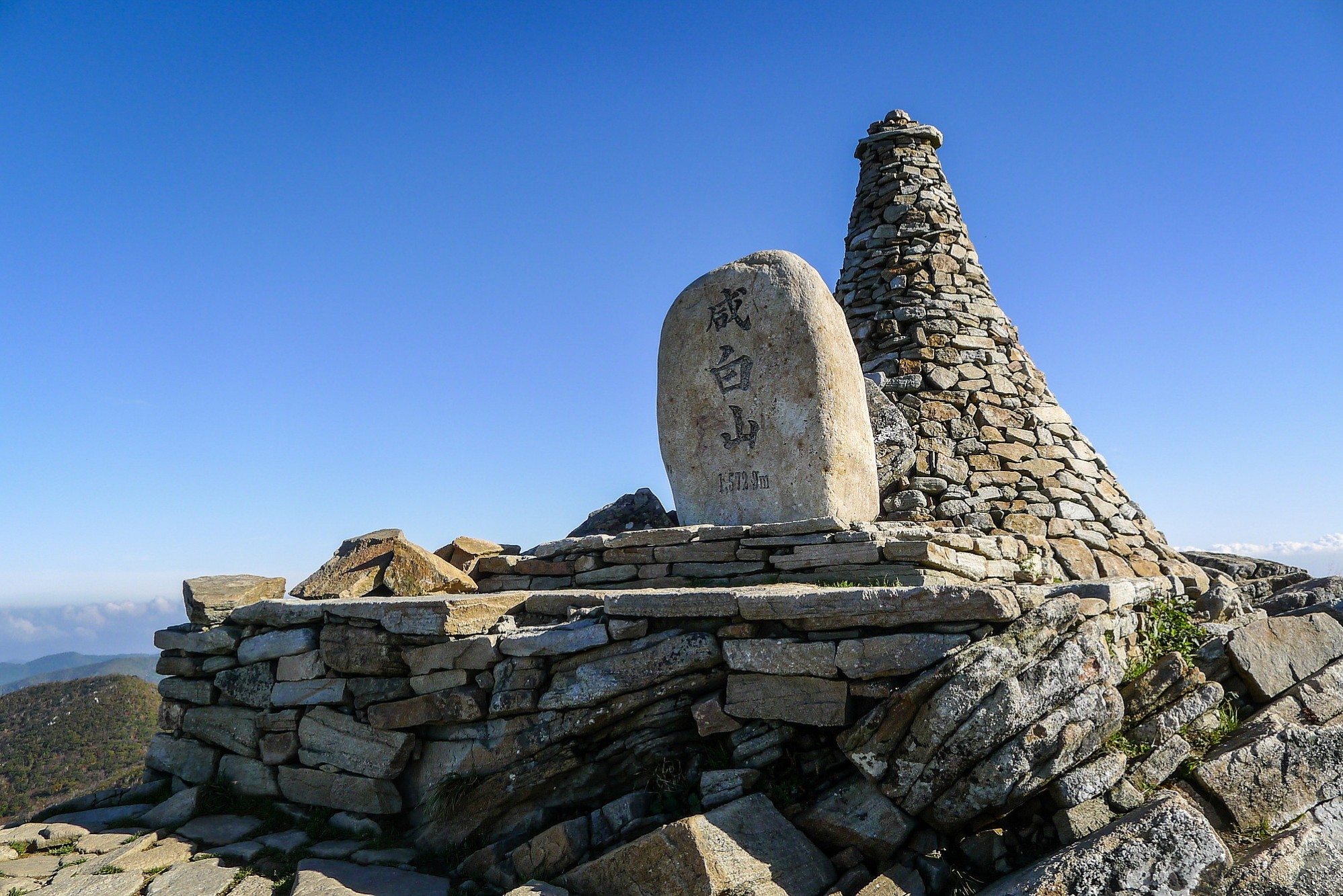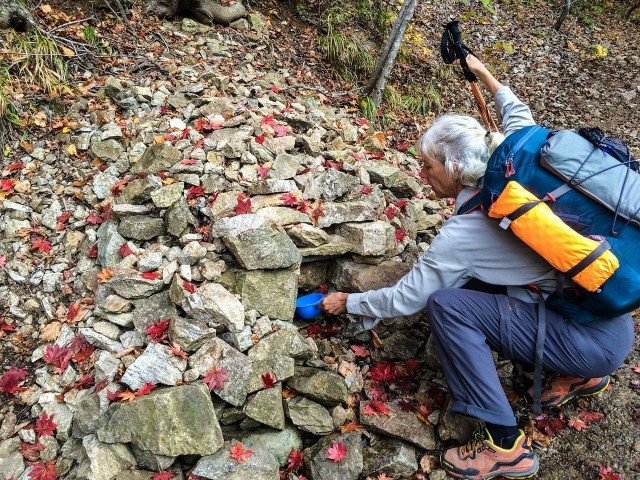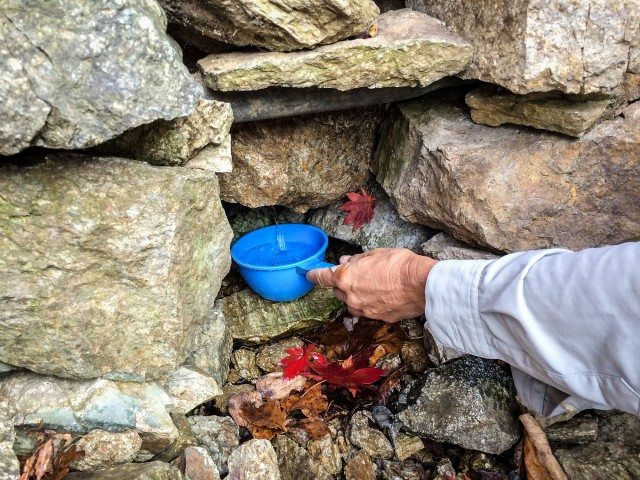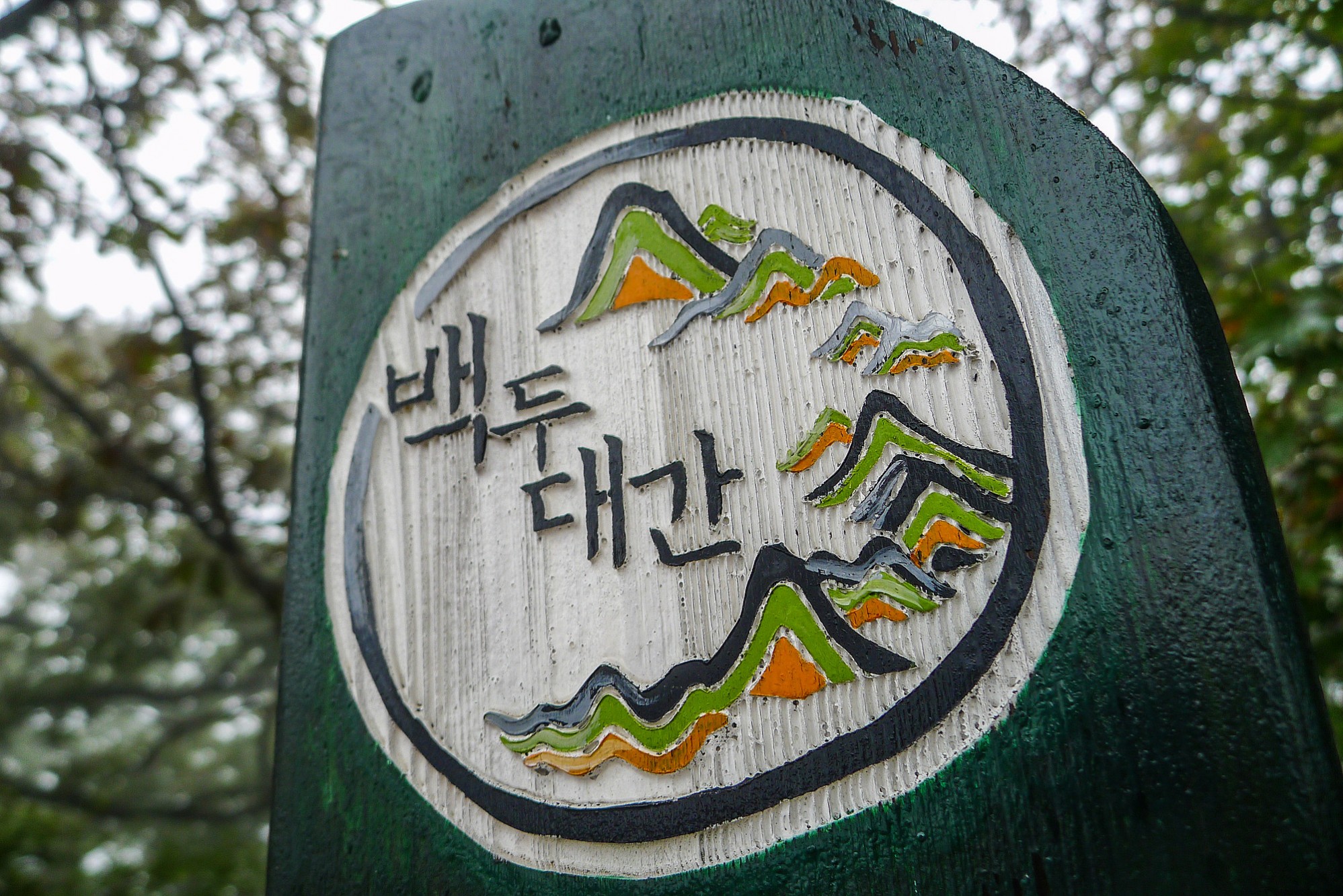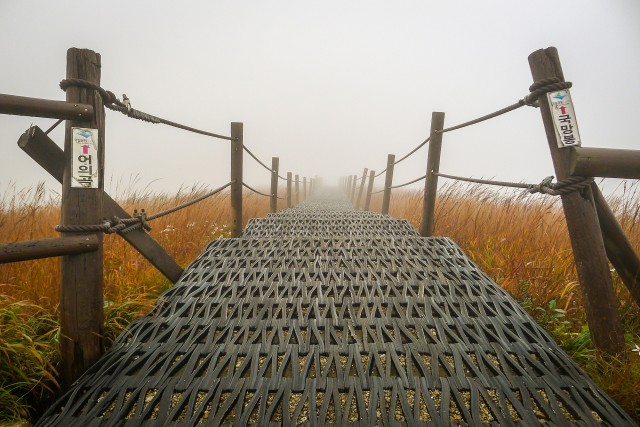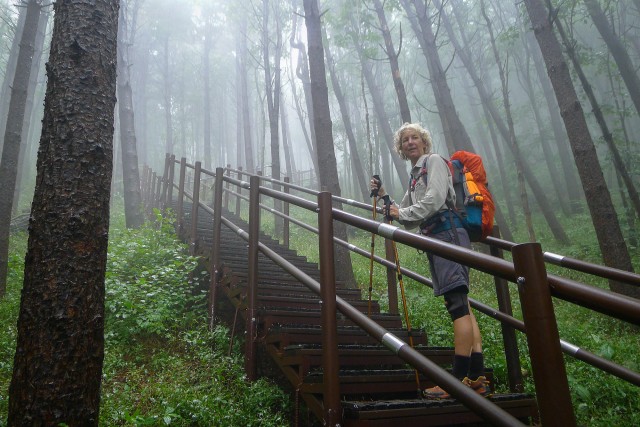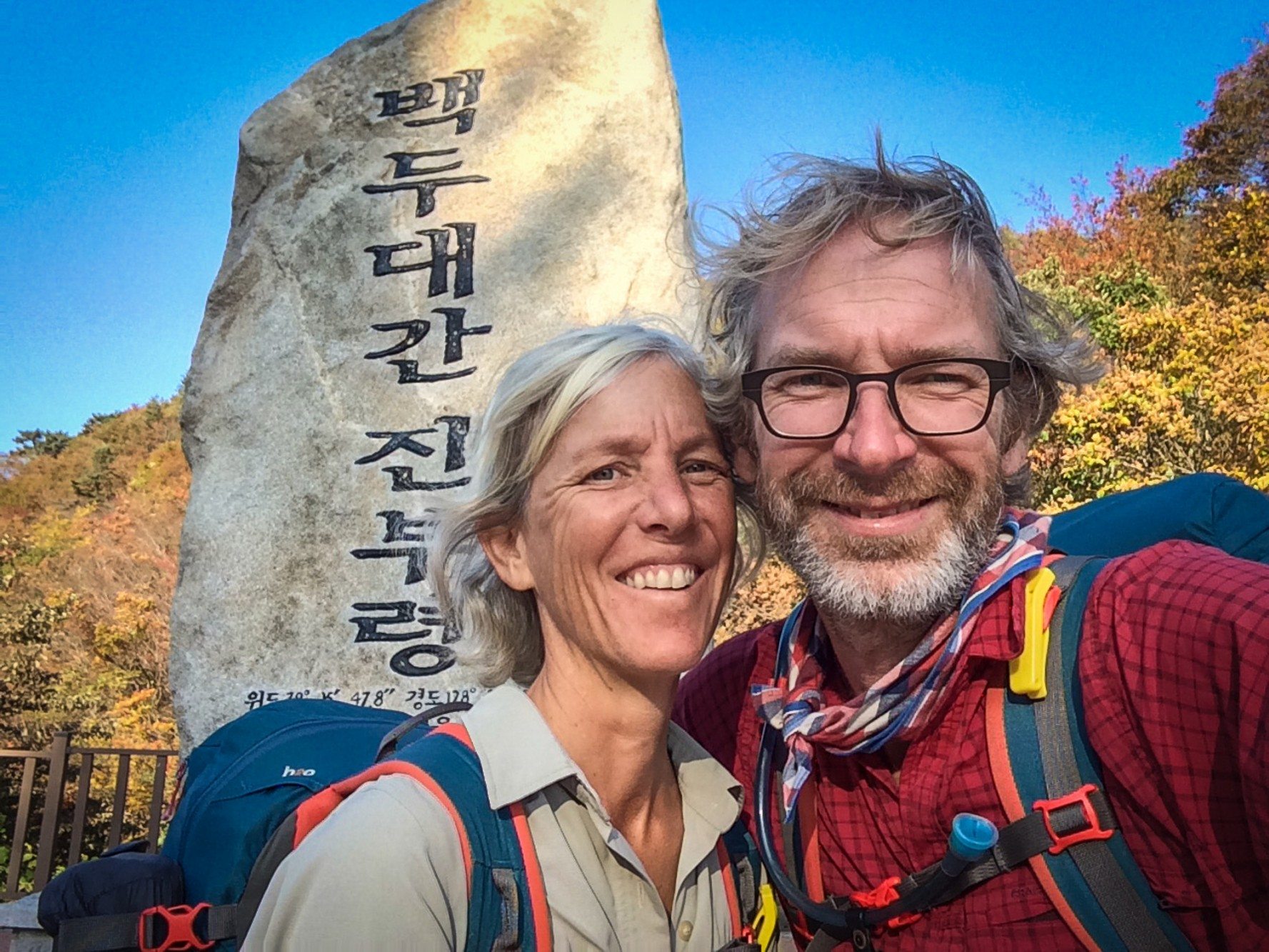“I’m happy,” I said to Coen as I took in the view of forested mountains with jagged peaks pin-sharp against a cobalt-blue sky. I stood in a wilderness so vast it rang in my ears and could still not really believe we were actually here. “Please remind me of this when one of these days I will have had it with hiking,” I added.
Maybe it was a remark more addressed to myself. We had just started our hike and had another 450 miles or so to go. I was bound to get exhausted, bored, annoyed and desperate. Frankly, we had no clue what we were in for. Over the past 13 years we had done multiple-day hikes in Pakistan’s Himalayas and a couple of hikes in the Patagonian Andes. Nothing that came anywhere close to this: hiking for 50 days, between 6 to 9 hours a day, with an average of 1.5 miles per hour.
Meanwhile our Land Cruiser, our faithful home on wheels for the past 13 years, stood in the parking lot of a friend. Why had we left the comfort of our means of transportation, home, kitchen, and so much more?
After nine years of South America I had been ready for a change of scenery. I convinced Coen to leave the idea of driving to Central and North America (at least for the time being) and ship the Land Cruiser to South Korea instead. A distinct environment indeed. While Korea enchanted us for many reasons – kind people, fabulous food, extraordinary sites – we quickly found it too small and too developed to explore properly by car.
South Korea’s roads are asphalted, the countryside is used for either urbanization or agriculture while nature is to be found solely high in the mountains, unreachable by car. Driving here didn’t give us a sense of adventure.
Yet, through the glimpses we had caught during our first weeks in South Korea, we knew there was much to learn and experience in this country. We just needed another way to move around. Thus came the question: why not on foot?
We bought a guidebook and after a four-day trial run in Seoraksan National Park we decided we’d go for it: hike the entire trail. The Baekdu Daegan, translated as the White Head Great Ridge, runs for some 870 miles from the south in South Korea along the western side of the peninsula to the border with North Korea and China. Obviously, the northern part is off limits, which left us with a 465-mile section in South Korea
We hadn’t even started out yet when a ranger stopped us. “You can’t go there. This is a closed section,” he sign-languaged. Due to torrential downpours – in all our brilliance we started hiking in the rainy season, with a leaky tent at that – part of the section was flooded. We had taken two buses to get here and having to backtrack wasn’t enticing but we needn’t have worried. In South Korea, people always want to help. “Get in,” the ranger motioned, “I’ll take you to another trailhead.”
This would characterize the hike. Despite being surrounded by wilderness, we would frequently come across people. Koreans are avid hikers. Dressed to a tee they explore national parks and sections of the Baekdu Daegan during weekends and holidays. When in between jobs or after retirement (age 60), quite a few take up the challenge to thru-hike the Baekdu Daegan. Others can’t afford to take so many days off and have joined one of the dozens of hiking groups. Some of them section-hike the Baekdu Daegan, e.g. one weekend or day every month.
Throughout our Landcruising Adventure, meeting people has been a key element. Despite all the fears people have of their neighbors (whether of a person, country, culture, or continent) we have felt welcome almost everywhere and have mostly met nice people. In South Korea this was no different. Koreans have a deep respect for Baekdu Daegan hikers and we were met with thumbs up, words of admiration and gestures of help. We got tomatoes, bell peppers, cucumbers, grapes – whatever happened to be in season. Hikers shared their lunches with us and I learned to carry more than we needed so I could return my share. Food also came from people living along or near the trail, even when they ran food businesses. While on a thru-hike you will eat more Ramen noodles than you can possibly enjoy, the trail regularly offers opportunities to eat in restaurants and devour fabulous local food. A practical one to remember is jeonshik, a type of set meal that includes a whole range of saucers with vegetables, mushrooms and/or fish that are refilled as often as you like.
Some sections of the trail are closed (to protect flora and fauna) and to get around them we hitchhiked, which was a piece of cake. Not only would people take us, filthy smelly hikers, in their new, shiny vehicles, they would often go out of their way to take us where we needed to be. One time Coen forgot his thermal shirt at a minbak (Bed & Breakfast). The next day had to go and retrieve it as the nights in our tent were too cold not to wear one. A couple on their way to Seoul made a forty-minute detour to take him to the minbak rather than dropping him off at the crossing where their ways were to part.
The Baekdu Daegan is much more than hiking. It is an intensive introduction to Korea’s culture and history. All along the trail, or sometimes just a few miles away from it, you come across interesting sites. You hike along remnants of fortress walls constructed by empires that were among the first civilizations on the peninsula, such as the Silla Kingdom. Monuments remind you of the many lives lost during the Korean War. Most of Korea’s temples are in the mountains and some of the most important ones, among which Jikjisa, are on the trail. The temples are guarded by polychrome, humongous guardian kings and are colorful yet tranquil sites to either admire as an outsider or to pray to Buddha. At some temples you can spend the night, which we once did and subsequently got stuck for a day because a typhoon was raging across the peninsula.
Hiking the Baekdu Daegan allowed us to go slower than slow, to enjoy a combination of mind-blowing nature and Korea’s culture. It was also a beautiful way to meet people and experience their kindness. Oh yes, and of course hiking 465 miles in the mountains is a great opportunity to get in shape too, which may be expedient after having sat on your butt in a car for way too many hours during your overland journey.
As to the hiking, we experienced two challenges. The obvious one was the exercise our bodies were not used to. Never having been prone to injuries at all I found myself hiking with two taped heels due to a type of heel pain called calcaneal bursitis, and later with a brace when a knee started acting up. Hiking 1,5 miles per hour on average says a lot: the Baekdu Daegan is steep. There are hours – days – that you literally only walk up or down, from one summit to a saddle and up to the next summit. No flat stretches, no undulating areas to give you a rest. Coen gave me a crash course in climbing and descending vertical rock surfaces using fixed ropes properly and efficiently.
Boredom is the second challenge, which may surprise you. Despite all the hard work, the hike entails a lot of walking in the woods. We often did so in the clouds or mist (which may be different during other seasons), so we couldn’t see anything around us. At times our world became claustrophobically small.
The challenges and boredom, however, are easily forgotten when you wake up to a clear day. A dry tent and dry clothes! You savor breakfast while dawn is breaking and the first sunrays are warming the earth. You drink another cup of coffee because, well, it is so nice to be here. You take in the moment. And, when you have finally packed your bag and have found your rhythm, you are enchanted by millions of mushrooms all around you: small, big, round, oval, red, brown, grey, white and every shade in between. You marvel as you snack on raspberries and blackberries that grow along the trail.
You are too late to grab your camera to catch the boars or deer thundering down a slope but it doesn’t matter because the sight is one you will never forget. You meet a hiker who already knows your name because as foreigners you are celebrities. “Let’s have lunch together,” the hiker says. You sit down on rocks that have warmed up in the sun. And while your better half mixes a package of Ramen noodles with pre-soaked lentils and dry seaweed, you nap and take in yet another view of awe-inspiring mountain ridges stretching towards the horizon, their colors fading from green to blue to grey.
And you feel blessed being here, and doing exactly this: hiking the Baekdu Daegan.
We would experience all this, and much more, in the weeks to come. Right now a kind ranger was driving us to another trailhead into Jirisan National Park, where an hour after our initial start, we began our first climb. It was an easy one, mostly following stairs cut out of rock, to the official start of the Baekdu Daegan, which is at the highest point of the trail (and on Korea’s mainland): the summit of Cheonwangbong at 6282 feet.
We started the day in sunny weather. Coen took his time photographing a wealth of flowers, which in the weeks to come would also include mushrooms, trail markers and trail ribbons, and any other detail he came across. We took our time snacking on gimbap (the Korean version of sushi) and quenched our thirst with water from a spring.
After lunch clouds took over and dressed in rain gear we continued to the top. When we reached the summit, a mound of gnarly rocks, the world had disappeared in mist. We were in the company of two young, cheery guys and since there were no views to admire we had fun taking selfies on and around a tablet bearing the name of Baekdu Daegan. “I’ll facebook my photos to you right now,” one of them said. Here? In the middle of nowhere? “Oh yes, of course. We have good coverage here. Korea is #1, you know.” Right.
And on that note – standing on top of Korea’s wilderness with excellent cellphone reception – we started our hike.
Useful information:
– We recommend buying the guidebook Baekdu Daegan Trail: Hiking Korea’s Mountain Spine, by Roger Shepherd. The author is currently working on a new edition, including an e-book version, which he intents to get published in April 2017. You can keep up to date via his website.
– The Baekdu-Daegan Facebook page is helpful to get up-to-date information.




